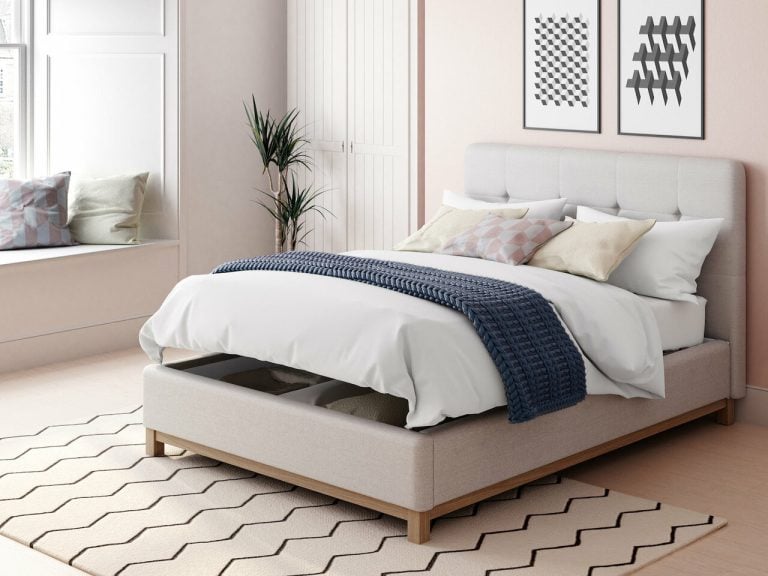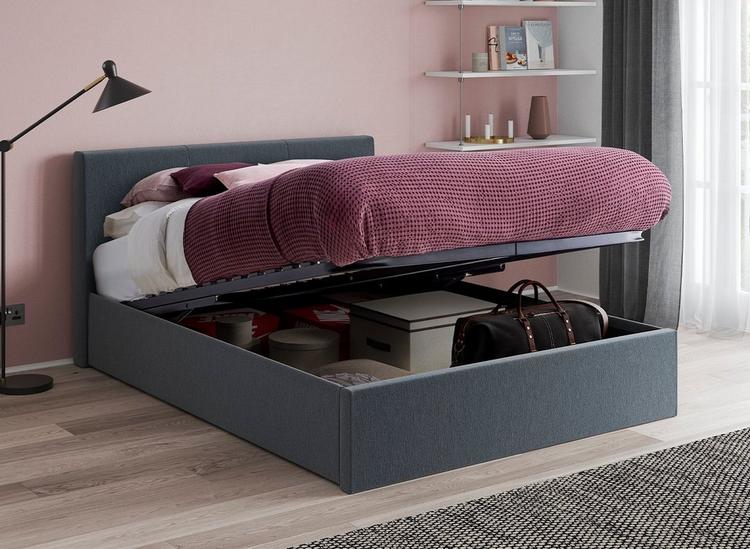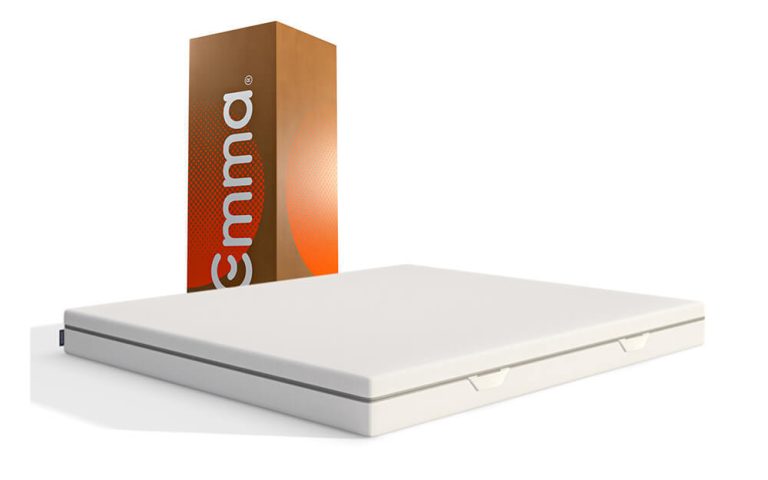Whether you’ve recently purchased a wooden bed frame or have had one for years, understanding how to properly maintain and care for it is essential. From preventing scratches and dents to ensuring its longevity, this beginner’s guide will provide you with all the tips and tricks you need to keep your wooden bed frame looking and functioning at its best. So grab a cup of tea, sit back, and let’s delve into the world of wooden bed frame maintenance.
Table of Contents
ToggleUnderstanding Wooden Bed Frames
Wooden bed frames are a popular choice for many people due to their durability, versatility, and timeless beauty. They come in various types, each offering unique features and advantages. Understanding these different types can help you make an informed decision when purchasing a wooden bed frame.
Different Types of Wooden Bed Frames
- Platform Bed Frames: These bed frames have a solid base that eliminates the need for a box spring or foundation. They offer a modern and minimalist look and are suitable for various mattress types.
- Sleigh Bed Frames: With their curved headboard and footboard, sleigh bed frames add an elegant touch to any bedroom. They are often crafted from hardwoods like mahogany or cherry for a luxurious feel.
- Canopy Bed Frames: If you’re looking to add drama and style to your bedroom, a canopy bed frame is an excellent choice. These frames feature four posts that support a top frame, creating a stunning focal point.
- Storage Bed Frames: For those in need of extra storage space, storage bed frames are a practical solution. They typically come with built-in drawers or compartments that provide ample room for linens, clothing, or personal items.
Advantages of Wooden Bed Frames
Wooden bed frames offer numerous advantages that make them a popular choice among homeowners.
- Durability: High-quality wooden bed frames are built to last. They can withstand daily use and are less likely to break or warp compared to frames made from other materials.
- Versatility: Wooden bed frames blend well with various bedroom styles, from rustic and traditional to modern and contemporary. They can easily be painted or stained to match your desired aesthetic.
- Timeless Beauty: Wooden bed frames exude a sense of elegance and sophistication that never goes out of style. They add warmth and character to a bedroom, creating a cosy and inviting atmosphere.
- Customizability: Wooden bed frames can be easily customised to fit your specific needs. Whether you prefer a certain type of wood, colour, or finish, there are endless options to make your bed frame truly unique.
Common Issues with Wooden Bed Frames
While wooden bed frames have numerous advantages, they are not without their challenges. It’s important to be aware of common issues that may arise and take the necessary steps to address them.
- Squeaking: One common issue with wooden bed frames is squeaking or creaking noises. This can be caused by loose joints or worn-out components. Regular maintenance and repair can help alleviate this problem.
- Scratches and Dents: Wooden bed frames are susceptible to scratches and dents, especially if not properly protected. Moving furniture or accidentally bumping into the frame can cause unsightly damages.
- Wood Splitting or Cracking: Over time, wooden bed frames may develop splits or cracks due to natural wear and tear or changes in humidity. These need to be addressed to prevent further damage.
- Insect Infestation: Wood is vulnerable to insect infestation, including bed bugs and termites. Proper prevention and regular inspections can help detect and address any insect issues early on.
Now that we have a better understanding of wooden bed frames, let’s explore how to maintain and care for them to ensure their longevity.
Preventative Maintenance
Regular maintenance is key to keeping your wooden bed frame in optimal condition. By following these preventative maintenance tips, you can extend the lifespan of your bed frame and minimise the risk of common issues.
Regular Cleaning
To keep your wooden bed frame clean, regularly dust and wipe it down with a soft, dry cloth. Avoid using harsh chemicals or abrasive cleaners, as they can damage the wood. Additionally, vacuuming the mattress and bed frame regularly can help remove dust, dead skin cells, and other allergens.
Avoiding Moisture
Wooden bed frames are prone to moisture damage, which can lead to warping, mould growth, and wood decay. Prevent this by keeping the bed frame away from humid areas in the room and avoiding spills or excessive humidity. Use a dehumidifier in humid environments to maintain ideal moisture levels.
Protecting from Sunlight
Excessive exposure to direct sunlight can cause the colour of the wood to fade and lead to drying and cracking. To protect your bed frame, keep it away from windows or use curtains or blinds to block out the sunlight. Applying a protective finish or wax can also help shield the wood from harmful UV rays.
Preventing Insect Infestation
To prevent insect infestations, regularly inspect your bed frame for any signs of bugs or pests. Keep your bedroom clean and clutter-free, as insects are attracted to debris and hiding spots. If you suspect an infestation, contact a pest control professional for proper treatment.
By incorporating these preventative maintenance measures into your routine, you can ensure that your wooden bed frame remains in excellent condition for years to come.
Repairing Minor Damages
Even with proper maintenance, minor damages may occur on your wooden bed frame over time. Thankfully, many of these issues can be easily repaired, allowing you to restore the beauty and functionality of your bed frame.
Fixing Loose Joints
If you notice any loose joints on your bed frame, such as wobbly legs or a shaky headboard, you can easily fix them with some basic tools. Use a screwdriver or wrench to tighten any loose screws or bolts. If necessary, consider adding wood glue to reinforce the joints for added stability.
Repairing Scratches and Dents
Scratches and dents are common annoyances on wooden bed frames, but they can be effectively repaired. Start by cleaning the affected area with a mild soap and water solution. Once dry, use fine-grit sandpaper to gently buff out the scratch or dent. Apply a matching wood filler, allow it to dry, and sand it down until smooth. Finish by applying a wood stain or paint to match the rest of the bed frame.
Dealing with Stains
Accidental spills or stains can tarnish the appearance of your wooden bed frame. For water-based stains, gently rub the area with a damp cloth and a mild detergent. For oil-based stains, use a specialised wood cleaner or mineral spirits. Always test any cleaning solution on a small, inconspicuous area before applying to the entire stain.
Replacing Damaged Wooden Slats
If any of the wooden slats on your bed frame are cracked or broken, they will need to be replaced. Measure the length, width, and thickness of the damaged slat and purchase a suitable replacement. Remove the old slat and attach the new one using screws or bolts. Make sure the replacement slat fits snugly and provides proper support for the mattress.
By following these repair techniques, you can address minor damages on your wooden bed frame and restore its original beauty.
Restoring and Refinishing
Over time, your wooden bed frame may start to lose its lustre or show signs of wear. Restoring and refinishing the frame can bring it back to life and give it a fresh, updated look.
Sanding and Smoothing
Before refinishing your bed frame, start by sanding it down to remove any existing finish or imperfections. Begin with coarse-grit sandpaper to strip away the old finish, then gradually move to finer-grit sandpaper to achieve a smooth surface. Wipe down the frame with a tack cloth or damp cloth to remove any dust particles.
Staining or Painting
Once the bed frame is smooth, you can choose to stain or paint it to your desired colour. If you prefer the natural look of the wood, opt for a wood stain that enhances the grain and warmth. Apply the stain evenly with a brush or cloth and wipe away any excess. For a painted finish, use a high-quality primer, followed by your chosen paint colour. Apply multiple thin coats for a smooth and even finish.
Applying a protective finish
To protect the newly refinished bed frame and enhance its durability, apply a protective finish. Polyurethane or varnish can provide a clear, protective layer that guards against moisture, scratches, and fading. Apply the finish according to the manufacturer’s instructions, allowing ample drying time between coats. Once the finish is fully dry, your bed frame will have a revitalised appearance and be better equipped to withstand everyday wear and tear.
Restoring and refinishing your wooden bed frame is a rewarding project that can breathe new life into your bedroom decor.
Handling Heavy Loads
Wooden bed frames are designed to support the weight of both the mattress and the sleeper. However, it’s essential to take certain precautions to ensure that the frame can handle heavier loads without compromising its structural integrity.
Choosing the Right Mattress
The weight of the mattress plays a crucial role in determining the load the bed frame can handle. Before purchasing a mattress, check its weight specifications and compare them to the weight limits recommended by the bed frame manufacturer. Avoid exceeding these weight limits to prevent excessive strain on the frame.
Reinforcing the Frame
If you anticipate heavy loads or frequently have multiple people sharing the bed, consider reinforcing the bed frame. Reinforcement options include adding extra slats or support beams, using sturdy metal brackets or braces, or investing in a centre support system. These additions can distribute the weight more evenly, reducing the risk of sagging or structural issues.
Checking for Sagging
Regularly inspect your bed frame for any signs of sagging, particularly in the middle or areas with the most weight distribution. Sagging can indicate that the frame is under too much stress or that the mattress is no longer providing adequate support. Address sagging issues promptly to prevent further damage to the frame and ensure a comfortable sleeping experience.
By paying attention to weight limitations, reinforcing the frame if needed, and addressing sagging concerns, you can ensure that your wooden bed frame is capable of handling heavy loads safely.
Avoiding Structural Issues
To maintain the structural integrity of your wooden bed frame, it’s important to perform regular inspections and address any issues promptly. By staying vigilant, you can prevent minor problems from escalating into major structural concerns.
Checking for Loose Fasteners
Periodically inspect the bed frame for any loose screws, bolts, or other fasteners. Over time, these can become loose due to the natural movements and vibrations of the bed. Tighten any loose fasteners immediately, using the appropriate tools. If a fastener cannot be tightened, consider replacing it with a new one.
Inspecting for Cracks and Splits
Inspect all parts of the bed frame, including the headboard, footboard, side rails, and support beams, for any cracks or splits. These can be signs of structural weakness and should be addressed promptly. Depending on the severity of the damage, you may need to repair or reinforce the affected areas to prevent further deterioration.
Replacing Worn-out Components
Components such as wooden slats, support beams, or brackets can wear out over time due to continuous use. Inspect these components regularly and look out for signs of excessive wear, such as splintering or breaking. Replace any worn-out components promptly to maintain the strength and stability of the bed frame.
By actively checking for loose fasteners, inspecting for cracks and splits, and replacing worn-out components, you can prevent structural issues that may compromise the safety and longevity of your wooden bed frame.
Dealing with Bed Bugs
Bed bugs are small, parasitic insects that can infest your wooden bed frame and cause discomfort and distress. Detecting and addressing a bed bug infestation early on is crucial for preventing further spread and potential health issues.
Identifying Bed Bug Infestation
Keep an eye out for common signs of a bed bug infestation, including small bloodstains or dark spots on the mattress or bed frame. You may also notice itchy red welts on your skin after sleeping or find shed skins or tiny eggs in crevices or joints of the bed frame. If you suspect a bed bug infestation, it’s important to take immediate action.
Cleaning and Vacuuming
Start by thoroughly cleaning and vacuuming the affected areas of the bed frame. Use a stiff brush to scrub away any eggs or bugs hiding in cracks or crevices. Vacuum the mattress, headboard, footboard, and all parts of the bed frame to remove any pests or debris. Empty the vacuum cleaner immediately and dispose of the contents in a sealed bag.
Using Bed Bug Treatment Products
There are various treatment options available to eliminate bed bugs from your wooden bed frame. These may include the use of bed bug sprays, powders, or steamers. Follow the instructions provided with the treatment products carefully to ensure effective and safe eradication of the bed bugs. Additionally, consider hiring a professional pest control service for severe infestations or for peace of mind.
By promptly identifying a bed bug infestation, thoroughly cleaning and vacuuming the affected areas, and using appropriate treatment products, you can effectively eliminate these pests and protect your wooden bed frame.
Protecting against Humidity
High humidity levels can wreak havoc on wooden bed frames, causing warping, mould growth, and wood rot. It’s important to take steps to protect your bed frame from excessive moisture and maintain ideal humidity levels in your bedroom.
Using Dehumidifiers
If you live in a humid climate or have a particularly moist bedroom, using a dehumidifier can help control humidity levels. Dehumidifiers remove excess moisture from the air, preventing it from being absorbed by the wooden bed frame. Keep the dehumidifier running consistently, especially during humid months or in rooms with poor ventilation.
Maintaining Proper Ventilation
Proper ventilation is essential for reducing humidity and preventing moisture buildup. Ensure that your bedroom has adequate airflow by opening windows, using fans, or installing air vents. Avoid placing your bed frame against walls or furniture that obstruct airflow, as this can contribute to high humidity levels.
Using Moisture Barriers
Consider using moisture barriers, such as mattress protectors or bed frame wraps, to shield your wooden bed frame from direct contact with moisture. These barriers create a protective layer that prevents moisture from seeping into the wood, reducing the risk of warping or mould growth. Choose moisture barriers made from breathable materials to allow proper airflow.
By using dehumidifiers, maintaining proper ventilation, and using moisture barriers, you can protect your wooden bed frame from the damaging effects of excessive humidity.
Moving and Disassembling
At times, you may need to move or disassemble your wooden bed frame. Whether you’re relocating to a new home or rearranging furniture, it’s important to do so safely to avoid damaging the frame or causing injuries.
Taking Apart the Bed Frame Safely
When disassembling your bed frame, refer to the manufacturer’s instructions, if available. Start by removing the mattress and bedding. Use a screwdriver or the appropriate tools to loosen and remove any fasteners, such as screws or bolts. Keep all hardware in a labelled bag to ensure you can easily reassemble the bed frame later.
Preparing for Transportation
If you’re moving your bed frame, take extra precautions to protect it during transportation. Wrap the disassembled components in moving blankets or bubble wrap to prevent scratches and dents. Securely place the parts in a moving truck or vehicle, ensuring they are well-protected and won’t shift during transit.
Reassembling the Bed Frame
Once you’ve reached your destination, carefully follow the manufacturer’s instructions to reassemble the bed frame. Lay out all the components and refer to the labelled bag of hardware. Take your time to ensure each piece is correctly aligned and secure all fasteners tightly. Double-check that the frame is stable and sturdy before placing the mattress back on top.
By taking the necessary precautions when moving or disassembling your wooden bed frame, you can avoid unnecessary damage and ensure a smooth transition.
Professional Maintenance
While many maintenance and repair tasks can be done independently, there may be instances when it’s best to seek the expertise of a furniture repair specialist. Professional maintenance services can provide comprehensive inspections, tune-ups, and repairs to keep your wooden bed frame in optimal condition.
Hiring a Furniture Repair Specialist
If you encounter major structural issues, extensive damage, or are unsure how to address a specific problem, consider hiring a furniture repair specialist. These professionals have the knowledge, skills, and specialised tools to diagnose and fix complex issues. They can also provide valuable guidance on maintenance techniques to prolong the life of your bed frame.
Annual Inspections and Tune-ups
As part of your proactive approach to wooden bed frame maintenance, consider scheduling annual inspections and tune-ups with a furniture repair specialist. These professionals can thoroughly assess the condition of your bed frame, identify potential issues, and provide necessary repairs or adjustments. Regular inspections can catch minor problems before they escalate into more significant concerns, saving you time, money, and potential sleep disruptions.
By enlisting the help of a furniture repair specialist for complex repairs and investing in annual inspections, you can ensure that your wooden bed frame receives the professional care it deserves.
In conclusion, understanding the different types of wooden bed frames, being aware of their advantages and common issues, and implementing preventative maintenance measures are crucial for maintaining and caring for your wooden bed frame. By regularly cleaning, avoiding moisture and sunlight, preventing insect infestation, and promptly repairing minor damages and structural issues, you can ensure the longevity and beauty of your bed frame. Additionally, protecting against bed bugs, humidity, and handling heavy loads appropriately, as well as practicing safe moving and disassembling, will contribute to the overall maintenance and care of your wooden bed frame. Lastly, considering professional maintenance, such as hiring a furniture repair specialist and scheduling annual inspections and tune-ups, will provide expert attention and support for your bed frame’s upkeep. By following these guidelines and investing time and effort into maintaining your wooden bed frame, you can enjoy its beauty and functionality for many years to come.




























































